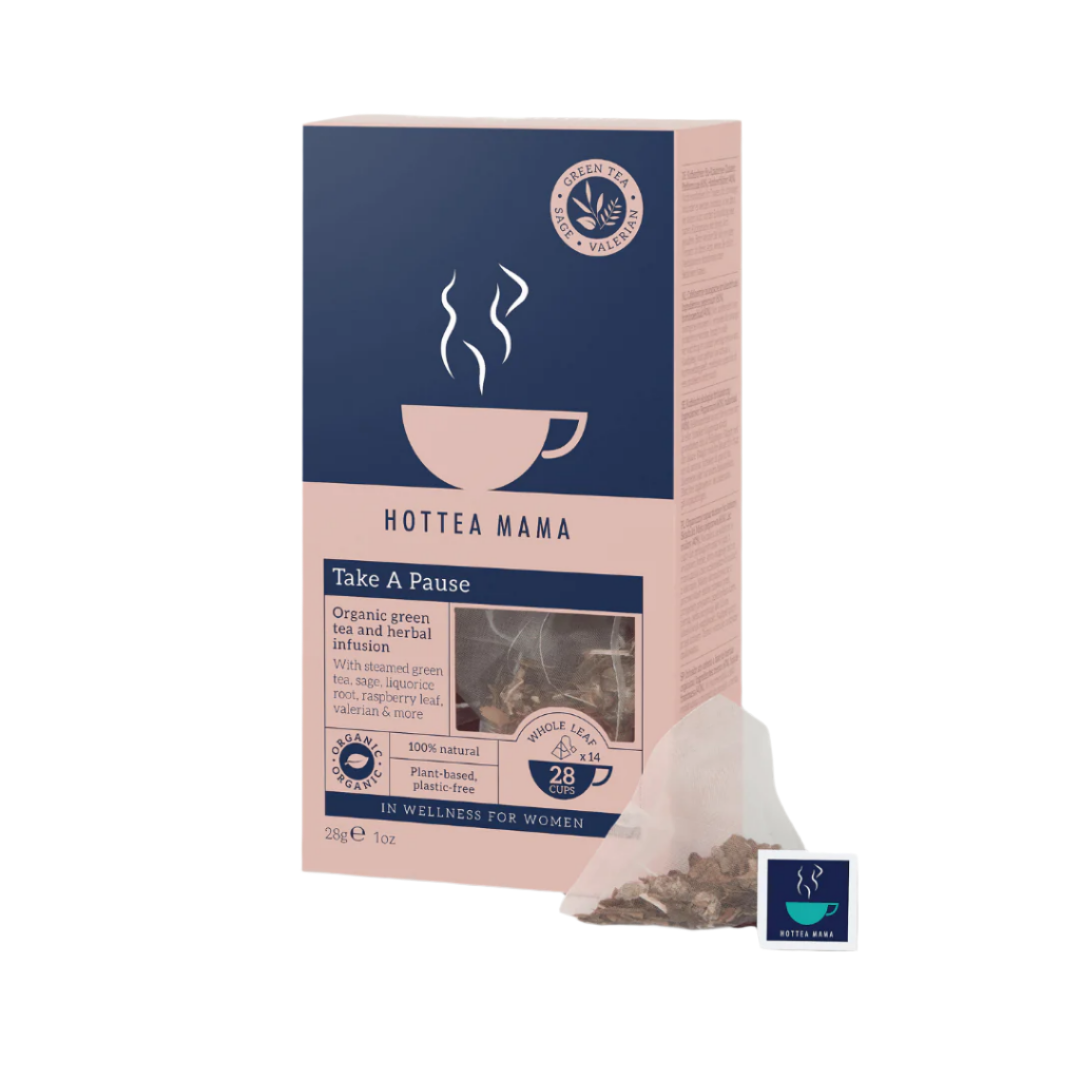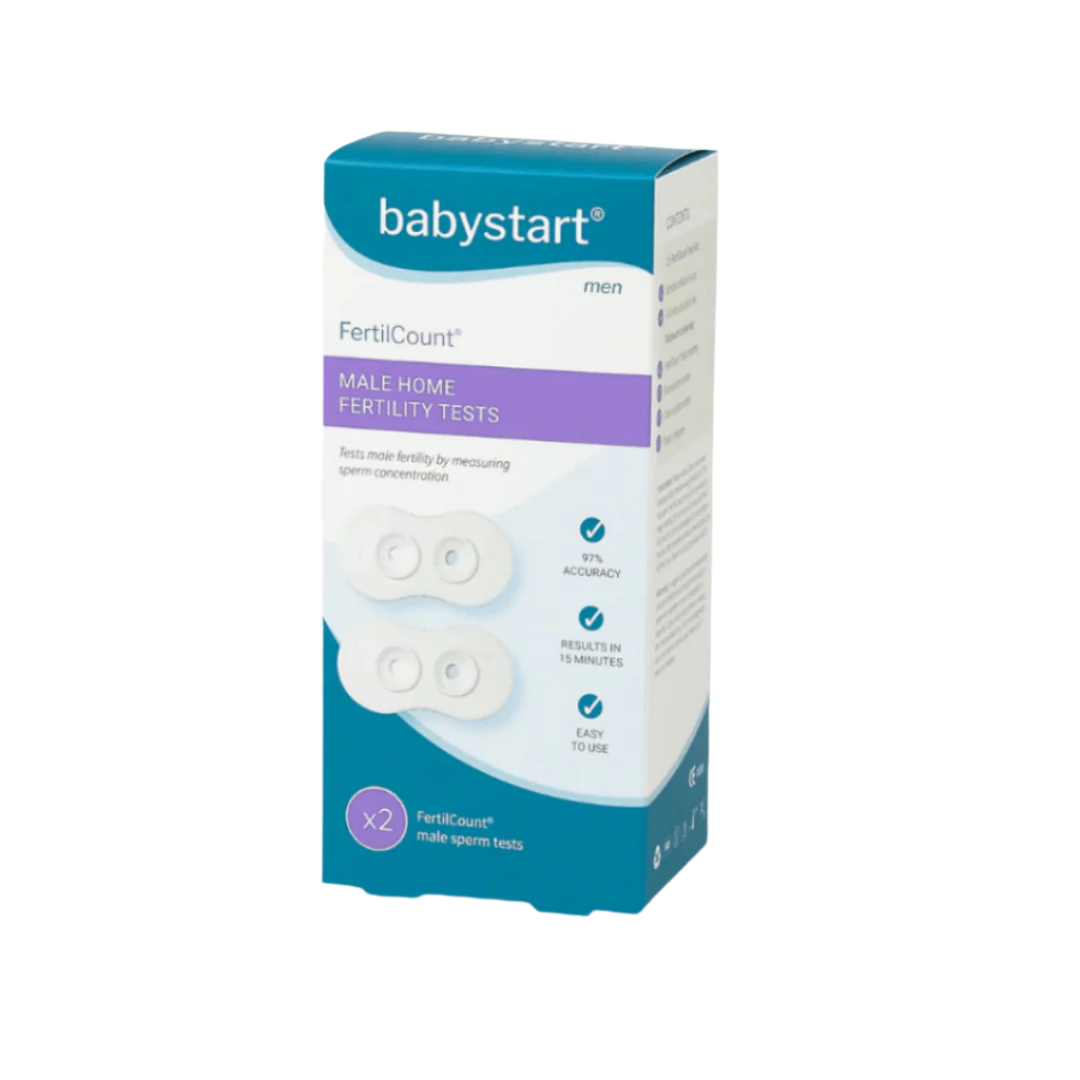The Journal
We Asked ChatGPT How to Manage PCOS Naturally — Here’s What It Said
Polycystic Ovary Syndrome (PCOS) affects millions of women and can cause irregular cycles, hormonal imbalance, fatigue, and challenges with fertility. Many people look for ways to manage PCOS naturally, and combining tracking with supplements is one of the most effective strategies. By using tools like Tempdrop and pairing them with myo-inositol PCOS supplements, you can better manage PCOS naturally while understanding how your body responds. This approach allows you to manage your symptoms without relying solely on medication, giving you insight into your cycles and overall hormonal health. With consistent tracking and support, it’s possible to manage PCOS naturally and see improvements in energy, mood, and cycle regularity. Why Should I Manage PCOS Naturally? Balance Your Hormones Safely – Support your body with supplements like myo-inositol and lifestyle changes without relying on medication. Boost Fertility & Cycle Regularity – Tempdrop helps track ovulation, while MyOva Balance supports hormone function for more predictable cycles, helping you to manage PCOS naturally. Increase Energy & Improve Mood – Stabilising your hormones and blood sugar can reduce fatigue and mood swings, allowing you to manage PCOS naturally without over-reliance on medication. Support Long-Term Health – Choosing to manage PCOS naturally can lower risks of insulin resistance, type 2 diabetes, and heart disease. Take Control of Your Health – With cycle tracking and targeted supplements, you gain insight into your body and make informed health decisions. But with so much advice online, many people are now turning to AI tools like ChatGPT to cut through the noise and get clear, evidence-based answers to support their approach. So, we decided to ask ChatGPT: “What helps to manage PCOS naturally?” Here’s what it said — and why it might be spot on. Track Your Cycle Accurately One of the biggest challenges with PCOS is irregular ovulation. ChatGPT recommended using a wearable basal body temperature tracker to understand when ovulation is happening, even if it’s unpredictable. “A wearable like Tempdrop can help by collecting accurate, overnight temperature data. This makes it easier to spot ovulation and understand your hormonal patterns.” — ChatGPT Tracking your cycle isn’t just about fertility. It also helps you see how lifestyle, stress, diet, and sleep affect your symptoms, giving you more control over your health. Support Hormone Balance with Myo-Inositol ChatGPT also highlighted myo-inositol as one of the most studied supplements for PCOS. “Myo-inositol can support insulin sensitivity, hormonal balance, and more regular cycles. Many people also notice improvements in mood and energy.” — ChatGPT We couldn’t agree more. Supplements like MyOva Balance contain myo-inositol and supporting nutrients designed to help manage PCOS naturally. Combine Both to Manage PCOS Naturally What stood out most was ChatGPT’s advice to combine cycle tracking with nutritional support: “Tracking plus supplementation is synergistic. You’ll not only support your body’s balance, but also see data showing whether it’s working.” — ChatGPT That’s exactly why we created the Tempdrop + MyOva Balance Bundle. It gives you: Insight: Tempdrop tracks your ovulation and cycle patterns. Support: MyOva Balance provides targeted nutrients for hormonal balance, energy, and mood. Together, they help you take manage PCOS naturally — with both the tools and the support your body needs. By combining cycle tracking with targeted PCOS supplements, you get a complete PCOS support bundle that addresses both symptom management and hormonal balance. Using Tempdrop alongside myo-inositol PCOS supplements helps you monitor your progress and manage PCOS naturally, giving you more control over your cycles, mood, and energy levels. Ready to Try it for Yourself? If you’re looking for a data-driven way to manage PCOS naturally, our Tempdrop + MyOva Balance Bundle is available now. See Product Want to Know More? Here's a deeper dive into the role of Myo-Inositol in Managing PCOS Symptoms Myo-inositol is a naturally occurring nutrient that plays a key role in helping your body respond to insulin. In women with PCOS, insulin doesn’t always work as efficiently, which can cause hormone imbalances, irregular cycles, and higher androgen levels. Taking myo-inositol can improve how your body processes insulin, helping to lower insulin levels and supporting more balanced hormone production. This can make ovulation more regular, support fertility, and even improve mood and energy. Because it works at a cellular level, myo-inositol doesn’t just help cycles — it also supports overall metabolic health, including blood sugar and cholesterol levels. Many women with PCOS find that combining myo-inositol with consistent cycle tracking gives them better insight into their body and a natural way to take control of their health.
Learn moreThe Complete Guide to BBT Tracking: Understanding Your Cycle Through Temperature
When it comes to understanding your cycle, your body speaks in signals. Some are obvious - like your period arriving each month - while others are more subtle but just as powerful. One of the most useful and accessible signals is your Basal Body Temperature (BBT). BBT tracking has been used for decades as a way to understand fertility, confirm ovulation, and uncover hormonal health patterns. Today, it’s easier than ever to incorporate into your daily routine thanks to smart thermometers and wearable tech. If you’ve ever wondered what BBT tracking really is, how it works, and what it can tell you about your body, this guide will cover it all. What Exactly Is BBT? BBT stands for Basal Body Temperature - your lowest body temperature in a 24-hour period. It’s usually reached during deep sleep when your body is most at rest. That’s why it’s called basal - your body at its baseline, without the fluctuations that come with movement, eating, or even stress. Tracking your BBT over time, you can see small but meaningful temperature shifts that reflect what’s happening hormonally throughout your menstrual cycle. When and How Should You Measure It? Technically, true BBT occurs during sleep. Traditionally, women used BBT thermometers to take their temperature first thing upon waking - before getting out of bed, moving around, or even drinking water. This provided a reasonably accurate reading of their basal temperature. However, this method can be tricky. One restless night, a late bedtime, travel, alcohol, or illness can all skew the reading. That’s why continuous overnight tracking with wearable devices is now considered more accurate - it measures your temperature while you’re actually asleep, not after you’ve woken up. Tips for accurate BBT tracking: Take your temperature at the same time every day (give or take an hour). Aim for at least 3 consecutive hours of sleep before measuring. Track consistently across your cycle, not just for a few days. Note external factors like stress, alcohol, or travel, which can affect results. Why Is BBT Tracking Important? BBT tracking isn’t just about numbers on a chart. It’s about what those numbers represent: hormonal changes. Here’s what consistent BBT tracking can reveal: 1. Ovulation Has Occurred After ovulation, progesterone levels rise. Progesterone is a heat-inducing hormone, which means your resting body temperature rises slightly - usually by 0.2–0.5°C (0.4–1.0°F). This confirms ovulation has already taken place, though it doesn’t predict it in advance. 2. Your Fertile Window By identifying your temperature shift each cycle, you can work backwards to pinpoint your fertile window. Fertility is highest in the five days leading up to ovulation and the day of ovulation itself. While BBT can’t predict ovulation, combining it with other fertility awareness methods (like cervical mucus tracking) gives a clearer picture. 3. Luteal Phase Health The luteal phase is the time between ovulation and your next period. BBT stays elevated throughout this phase. A healthy luteal phase usually lasts 10–16 days. If your luteal phase is consistently shorter, it may signal low progesterone or challenges with implantation. 4. Cycle Regularity & Patterns Over several months, BBT tracking can reveal irregular cycles, late ovulation, or even anovulatory cycles (when no ovulation occurs). These insights are helpful whether you’re trying to conceive or simply want to better understand your menstrual health. 5. Possible Early Sign of Pregnancy If your BBT stays elevated for 18 days or more after ovulation without your period arriving, it may be an early sign of pregnancy. While only a pregnancy test can confirm it, many women spot the first clue in their BBT charts. 6. Impact of Lifestyle Factors Tracking over time also shows how stress, illness, poor sleep, or even time zone changes affect your cycle. It’s a reminder that your body and hormones respond to the world around you. A Typical BBT Pattern Across the Cycle To understand BBT tracking, it helps to know what a “normal” pattern looks like: Menstrual Phase (Day 1–5) BBT: Low and stable (36.1–36.4°C / 97.0–97.7°F). Hormones: Oestrogen and progesterone are at their lowest. Follicular Phase (Before Ovulation) BBT: Remains in the lower range, with small fluctuations. Hormones: Dominated by oestrogen, preparing the body for ovulation. Ovulation (Mid-cycle) BBT: Often a slight dip just before ovulation. Then, a sharp rise (around 0.3–0.6°C) signals ovulation has occurred. Hormones: Triggered by a surge in luteinising hormone (LH) and rising progesterone. Luteal Phase (After Ovulation) BBT: Elevated and stable (36.5–36.9°C / 97.7–98.4°F). Hormones: Progesterone dominates, raising resting body temperature. End of Cycle If not pregnant: BBT drops sharply 1–2 days before your period. If pregnant: BBT stays high beyond 16+ days post-ovulation. On a chart: you’ll see a low range pre-ovulation, a clear thermal shift upward, and a higher range post-ovulation. That thermal shift is the key marker that ovulation occurred. Why Consistency in BBT Tracking Matters BBT tracking isn’t about perfection - one disrupted night or missed reading won’t ruin your chart. What matters is the pattern over time. Consistent tracking builds a map of your body’s natural rhythm. This can: Help you recognise your unique fertile signs. Provide valuable information to discuss with a healthcare professional. Empower you to sync your lifestyle with your cycle phases (workouts, nutrition, rest). Consistency is also key if you’re using BBT as part of the Fertility Awareness Method (FAM) for natural family planning. Who Can Benefit From BBT Tracking? Trying to conceive – BBT confirms ovulation and helps identify fertile windows. Avoiding pregnancy naturally – when combined with FAM, it can be a hormone-free method of contraception. Managing conditions like PCOS – BBT tracking can highlight irregular ovulation or anovulatory cycles. General cycle awareness – even if you’re not TTC, it’s a tool for understanding your health. The Bottom Line: BBT tracking is a simple and insightful way to better understand your cycle. By noticing small shifts in your temperature, you unlock a deeper awareness of your hormones, ovulation, and fertility health. Whether you’re trying to conceive, avoiding hormones, or simply connecting with your body, BBT tracking is one of the most empowering tools available. All it asks from you is a little consistency.
Learn morePCOS, Nutrition & Fertility with Kirsten Oddy
PCOS can feel overwhelming - but it doesn’t have to be. This month, we sat down with Kirsten Oddy, Women’s Health Nutritionist and PCOS specialist, to talk myths, fertility, food swaps, and the lifestyle habits that really make a difference. From busting the gluten-free/dairy-free myth to sharing practical nutrition tips and small, sustainable steps, Kirsten reminds us that it’s not about restriction, it’s about building habits that support your body, your cycle, and your fertility. What’s the biggest myth about food & PCOS? Probably one of the biggest myths I hear is that you need to go gluten- and dairy-free to manage PCOS. There’s no strong evidence this helps, and it can actually lead to unnecessary restriction and a tougher relationship with food - something women with PCOS are already more vulnerable to. It’s easy to look for one ‘super-food’ or a strict diet to “fix” PCOS, but the truth is it’s your overall approach to food and lifestyle that has the biggest impact over time to managing your symptoms. How can nutrition support fertility in women with PCOS? Nutrition can play a powerful role in supporting fertility with PCOS, either on its own or alongside medical treatment. While irregular periods and ovulation are the most common fertility challenges, PCOS can also affect egg quality, disrupt the vaginal microbiome, and even increase miscarriage risk - all of which can make trying to conceive more difficult. That’s why a multi-faceted approach to balancing blood sugar, reducing inflammation, and optimising nutrient status is so important. Trying to conceive with PCOS can feel overwhelming and isolating, but the good news is that your diet and lifestyle are areas you can take control of - and even small changes could make a big difference. What are some easy food swaps for everyday life? Swap white rice/pasta → quinoa, brown rice, or lentils Higher in fibre + protein, keeps you fuller for longer, and supports insulin sensitivity. Swap 1 portion of red meat → oily fish each week Less saturated fat, more anti-inflammatory omega-3s. Swap cereal/toast + jam at breakfast → Greek yoghurt, eggs, or a protein smoothie A protein-rich start balances blood sugar and reduces snacking later on. Swap your second coffee of the day → green tea Lower caffeine, rich in antioxidants + calming compounds like L-theanine, and has been shown to improve PCOS symptoms. Add 1 extra vegetable each day Not technically a swap, but more variety = more fibre + nutrients. Aim for ~8 portions of veggies daily. Even small swaps add up to a big difference over time! Beyond diet, what lifestyle habits really help? Lifestyle habits like sleep, stress management and movement, all work together with nutrition to support your overall wellbeing with PCOS. Getting good quality sleep is important. Just one night of disturbed sleep can increase your hunger and cravings the next day - something that’s already a struggle with PCOS! Exercise is also amazing for PCOS. Both cardio-based exercise and resistance-based movement have been shown to lower insulin and testosterone levels. The key is finding something you actually enjoy so it can become a regular part of your routine. If someone feels overwhelmed by a PCOS diagnosis, what’s the first positive step they can take today toward improving their fertility and wellbeing? It’s easy to get trapped in the mindset that you need to ‘fix’ everything at once. This can actually leave you feeling completely overwhelmed and you end up not doing anything instead! If you are feeling overwhelmed, I encourage you to just start by focusing on the one thing that feels achievable right now - that could be making one of the food swaps we mentioned earlier, or going for a 10 minute walk on your lunch break. It’s the small, consistent changes that really add up to make a big difference. Thank you Kirsten A big thank you to Kristen for talking to us this PCOS Awareness Month about PCOS, nutrition and fertility. We truly believe what Kristen says, 'small changes really can make a difference'. So what small change are you going to make today? You could make one of Kirsten's suggested food swaps, go for a walk at lunch time or something we're very passionate about, start cycle tracking. Cycle tracking gives you the insights you need to be able to understand your cycle better. Want to know more? Read our article, 'using cycle tracking to manage conditions like PCOS and endometriosis', here. Kirsten Oddy Kirsten Oddy is a Women’s Health Nutritionist specialising in PCOS and passionate about helping women feel their best. She helps women regulate cycles, improve fertility, and build nutrition and lifestyle habits that actually stick - without restrictive diets or overwhelm. A go-to expert in PCOS, Kirsten runs a busy online clinic with her team, providing personalised nutrition consultations, coaching packages, advanced health testing, and hands-on workshops to support women with PCOS in every aspect of their health and wellbeing.
Learn more
In The Press

Simplify Your Fertility Tracking with Tempdrop
Take the guesswork out of cycle tracking with Tempdrop, the smart wearable thermometer that fits seamlessly into your routine. Designed to learn your unique patterns, it provides accurate, reliable insights without the hassle of early wake-ups or daily charts.












